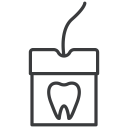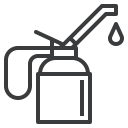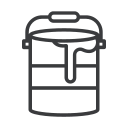Water
CNEHJ nurses are helping to educate and engage nurses about health concerns related to water.
Nurses Recognize the Importance of Protecting all our Water
As nurses we know that the human body is about 60 – 70% water. All life requires water to live.
In many indigenous cultures water is a sacred element. And yet… we have been desecrating our water for a long time now – our streams and rivers, our lakes and oceans, and, in turn, our bodies. It is estimated that 1 million people in California do not have access to healthy drinking water.

All drinking water comes from one of two sources – surface sources (rivers, lakes, reservoirs) or groundwater (which is actually “under”ground water). Groundwater is accessed by drilling wells. In California, more than 80% of the drinking water comes from surface waters.

Policies
The California EPA (CalEPA) is responsible for regulating water.
In California, in addition to air quality, CalEPA is responsible for regulating water and does so through the California Water Resources Control Board and regional agencies.
There are two major statutes that apply to our water – the Clean Water Act, which protects our surface and groundwaters and regulates discharges of pollution into US waters, and the Safe Drinking Water Act which specifically applies to drinking water. Note: the regulatory measurement for chemicals in our drinking water is called the Maximum Contaminant Level or MCL.
Water Pollution
Ground water contamination in California’s water is generally divided into two categories. In the Central Valley, Central Coast, and Imperial Valley regions, the contaminants are related to agricultural chemicals such as pesticides. In the Klamath River Basin, Pajaro, and the Aliso-San Onofre regions, the contaminants are primarily nutrient contaminants.

Graphic from the Pacific Institute:
https://pacinst.org/from-source-to-tap-assessing-water-quality-in-california/
Accessing Information About Your Drinking Water
If you purchase your household water from a public or private water supplier, you have the right to see the results of the tests they perform on 90 plus chemicals, characteristics, and categories. By law, your water company must provide this information to you in the form of a “Consumer Confidence Report.” They will often include it once a year in your water bill.
The CA Office of Environmental Health Hazard Assessment (OEHHA) has created a Human Right to Water data tool with which you can learn about your own water quality, quantity, and cost.
Water Contaminants
There is a new family of contaminants of concern in drinking water in surface waters around the state and country – PFAS (per- and polyfluoroalkyl substances). This family of chemicals were developed into stain-resisting products (including many furniture fabrics and carpets), grease-resistant products (used to coat to-go containers and other products), and non-stick products (pots, pans, and other products). There are over 4,700 chemicals in this family. AND there are a wide range of significant health effects associated with PFAS, see the graphic below:

PFAS are Found in a Wide Range of Everyday Products

non-stick cookware

furniture

clothes

carpets

pizza boxes

dental floss

cosmetics

lubricants

paint

popcorn bags
Monitored Chemicals
Two PFAS chemicals, PFOS and PFOA, are now being monitored in CA groundwater and are detected at unhealthy levels nearly 1/3rd of the time. The following map, produced by the Pacific Institute, shows the PFAS results from groundwater monitoring.

There are no federal or state regulations for PFAS in drinking water.
We are awash in these “forever chemicals,” as they have become known, because they do not break down and remain toxic. Water is an important exposure pathway, but there are others as noted in the graphic below:

All states are required to assess their water bodies every two years and develop a plan to address harmful contamination.
As nurses, we should be aware of the results of the state’s water assessments as they pertain to the communities we serve.
Lead
Lead is an element that is both naturally occurring in some California water and can be a contaminant caused by leaded pipes and lead solder on pipes. CalEPA has a lead sampling program with the California Department of Education to assess and address lead in schools. For more information and resources about lead poisoning specifically for health professionals in California, see the California Department of Public Health’s Childhood Lead Poisoning Prevention Branch.


Arsenic
Arsenic is an another toxic element which, like lead, is naturally occurring in California’s drinking water. Contamination from arsenic also comes from mining sites, manufacturing processes, and agricultural sources. Arsenic is a known carcinogen and is associated with a range of human cancers – liver, bladder, kidney, lungs, and skin. There are a number of non-cancer health risks as well, including skin problems, hemopoietic problems, arrhythmias, and peripheral nerve damage. In the map to the left, the red dots show places where groundwater testing resulted in levels above the Maximum Contaminant Level (MCL).
Pharmaceuticals
Pharmaceuticals are entering our drinking water sources in a variety of ways, including from treated and untreated domestic sewage in which human excrement and urine contains pharmaceuticals. The US Geologic Services has measured an array of prescription and non-prescription drugs in waterways throughout the US that include steroids, antibiotics, and prescribed hormones. Veterinary use of antibiotics for meat animals and poultry has significantly increased the amount of antibiotics present in waterways and the associated development of antibiotic-resistant organisms. For more specific information about pharmaceutical waste in CA water, see the CA Department of Toxic Substances’ page on Pharmaceutical Waste.
Practice Green Health, a non-profit organization dedicated to improving environmental health and sustainability in hospitals, has created a 10-Step Blueprint for Managing Pharmaceutical Waste in Healthcare Facilities.
